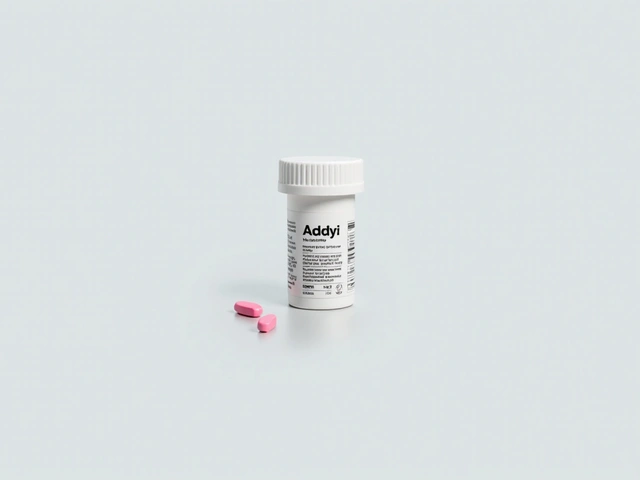Understanding the Long-Term Health Impacts of PMDD
If you’ve ever heard someone say they have “bad PMS,” they might actually be dealing with Premenstrual Dysphoric Disorder (PMDD). Unlike regular pre‑menstrual symptoms, PMDD can turn a month’s cycle into a serious health hurdle that sticks around for years. In June 2024 we dug into how this condition shapes both body and mind over the long haul, and what you can do right now to protect your well‑being.
Why PMDD Matters Over Time
First off, PMDD isn’t just a mood swing. It’s linked to higher rates of chronic anxiety, depression, and even heart‑related issues later in life. Studies show women with untreated PMDD are up to 30% more likely to develop persistent mood disorders after their reproductive years. The hormonal roller‑coaster also nudges the body toward inflammation, which can aggravate conditions like arthritis or migraine.
Beyond mental health, the physical side effects add up. Persistent fatigue, sleep disturbances, and appetite changes can lead to weight gain and metabolic shifts. Over months and years, those changes raise the risk of type 2 diabetes and hypertension. So thinking of PMDD as a “monthly annoyance” really underestimates its ripple effect on overall health.
Managing PMDD for Better Health
The good news? There are concrete steps you can start today to break that cycle. Tracking your symptoms in a simple diary helps pinpoint triggers—whether it’s caffeine, lack of sleep, or stress at work. Once you see patterns, small lifestyle tweaks often make a big difference.
Exercise is a powerhouse tool. Even a 20‑minute walk during the luteal phase (the two weeks before your period) can lower anxiety and improve mood. Pair that with a diet rich in omega‑3 fatty acids—think salmon, walnuts, flaxseed—to combat inflammation.
If lifestyle changes aren’t enough, medical options are available. Selective serotonin reuptake inhibitors (SSRIs) are the most common prescription for PMDD and can be taken only during the symptomatic weeks. Hormonal birth control that stabilizes estrogen and progesterone levels also works for many women. Talk to a healthcare provider about which route fits your needs.
Mind‑body techniques deserve a spot too. Cognitive‑behavioral therapy (CBT) has strong evidence for reducing PMDD severity, especially when combined with relaxation exercises like deep breathing or guided imagery. These practices not only ease monthly symptoms but also build resilience against long‑term mental health challenges.
Lastly, don’t go it alone. Joining a support group—online or in person—connects you with others who understand the daily reality of PMDD. Sharing tips, venting frustrations, and celebrating small wins can boost motivation and keep you accountable to your self‑care plan.
Bottom line: PMDD is more than a monthly inconvenience; it’s a condition that can shape your health for years if left unchecked. By tracking symptoms, tweaking lifestyle habits, exploring medical treatments, and leaning on support networks, you can limit the long‑term impact and live with less disruption each month.
Understanding Long-Term Health Impacts of Premenstrual Dysphoric Disorder
Premenstrual Dysphoric Disorder (PMDD) is more than just severe PMS; it can influence long-term physical and mental health. This article explores the chronic impacts of PMDD, offers helpful tips for management, and discusses available treatment options to improve quality of life.
About
Health and Wellness
Latest Posts


Retin A 0.025% (Tretinoin) vs Alternatives: A Practical Comparison
By Orion Kingsworth Oct 19, 2025

Supporting a Loved One with OCD: Practical Tips for Family and Friends
By Orion Kingsworth Sep 22, 2025

FDA Approves Flibanserin 'Little Pink Pill' Amid Controversy
By Orion Kingsworth Aug 18, 2024

